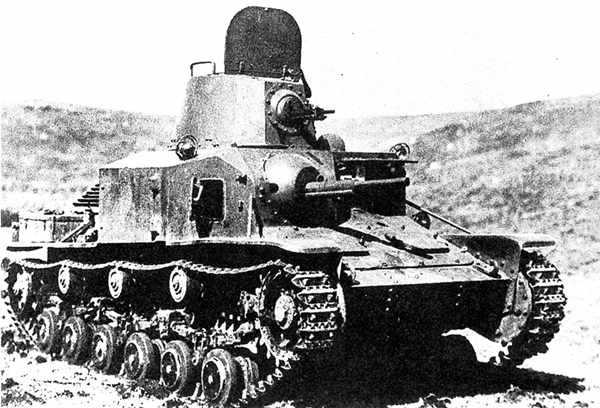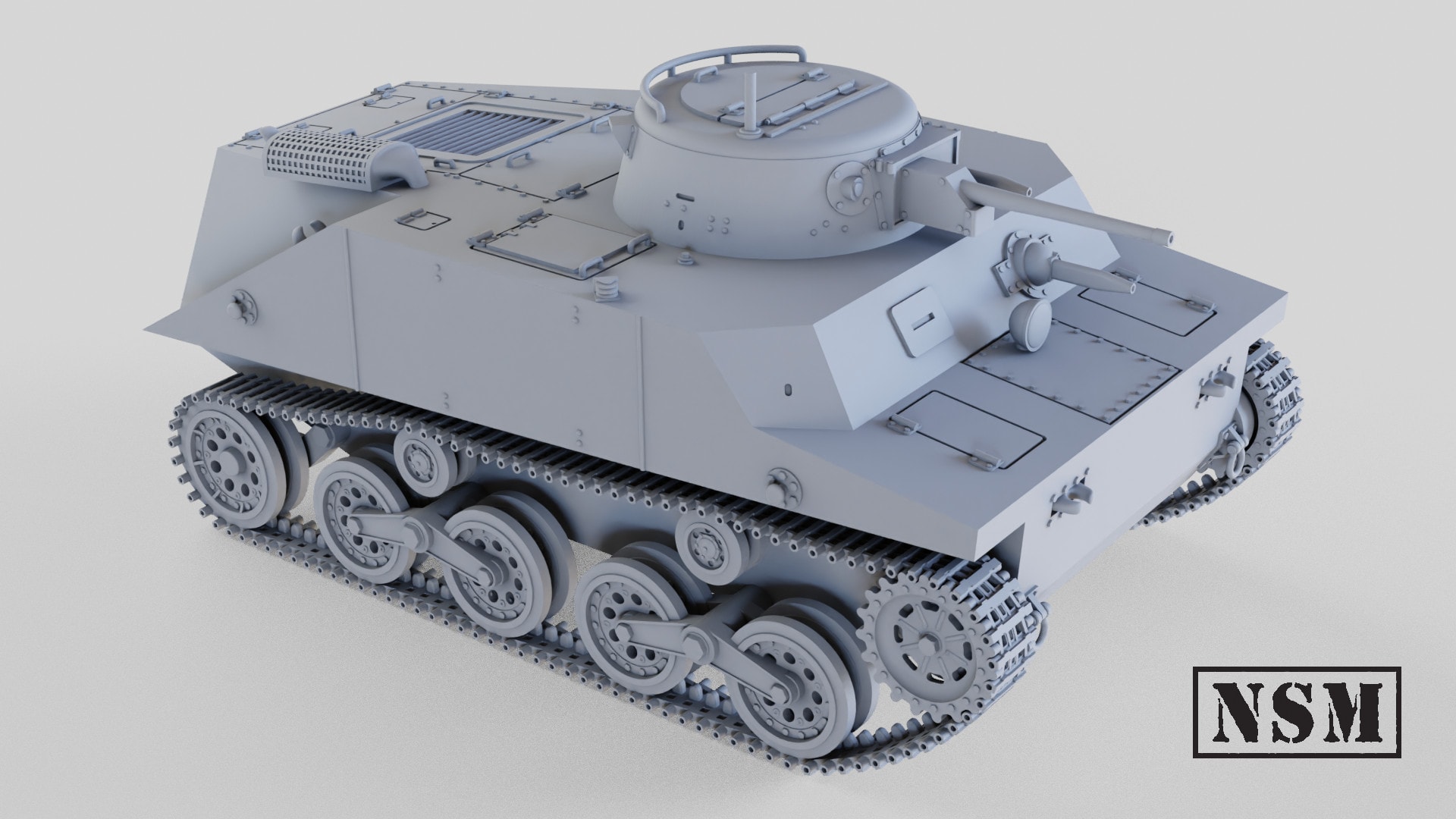 type 92 earlly
type 92 earlly  t92 late
t92 late  92 aphi
92 aphi
- Type 2 Ka-Mi amphibious tank
Main article: Type 2 Ka-Mi
This was the first amphibious tank produced in Japan and was intended for use by the Japanese Special Naval Landing Forces. The chassis was based on the Type 95 Ha-Go and its main armament was the same, a 37 mm tank gun. The pontoons were attached by a system of “small clips” with a release inside the tank, to be engaged once it landed for ground combat operations.[31] The Type 2 Ka-Mi was first used in combat on Guadalcanal in late 1942. Later they were encountered by the United States Marine Corps in the Marshall Islands and Mariana Islands, particularly on Saipan.[32] They were also used during the fighting on the Philippine island of Leyte in late 1944.[33] They were produced from 1942–1944, with only 182 to 184 completed.[34][35]
- Type 3 Ke-Ri prototype
This was a proposed model with a Type 97 57 mm tank gun as the main armament in a modified turret. The chassis was the same as the Type 95 Ha-Go. The light tank had a weight of 7.4 tons and a crew of 3 men. It was determined that the turret was too cramped for the crewmen, once the main gun was installed. A small number of prototypes were produced, however, the design never got past the field-testing stage.[36]
Type 4 Ke-Nu light tank
- Type 4 Ke-Nu conversion
Main article: Type 4 Ke-Nu
A conversion that replaced the existing Type 95 Ha-Go turret with the larger turret of the Type 97 Chi-Ha, armed with the low-velocity 57 mm tank gun. The conversions were done late in the war, with one estimate stating that approximately 100 units were completed.[37]
Type 4 Ho-To SPG with a Type 38 12 cm howitzer
- Type 4 Ho-To prototype
The Ho-To was a self-propelled gun on a modified Ha-Go chassis. It mounted a Type 38 12 cm howitzer in an open casemate with frontal and side armour. One prototype was completed.[38]
- Type 5 Ho-Ru prototype
The Ho-Ru was a light tank destroyer similar to the German Hetzer, but armed with the weaker 47 mm main gun in a semi-enclosed casemate. The Type 5 Ho-Ru utilized the chassis of the Type 95 Ha-Go, but its suspension was enlarged to 350 mm track link width. There were two set rows of wheel guide pins, holding a road wheel between them. The sprocket of the driving wheel was the grating type to gear with the wheel guide pins like on the Soviet T-34. Development of the Type 5 Ho-Ru started in February 1945 with only one prototype being completed before the end of the war.[39][40] %2fJapan%2fFiles%2f4-SPG%2fType2-KuSe%2fKuSe-01.Tanks.jpg&ehk=EjWlLbpykktQE8OiWt3smCEjCjd15KetnfN566VuHVw%3d&risl=&pid=ImgRaw&r=0&sres=1&sresct=1) . Ku-se 75mm spg
. Ku-se 75mm spg 


- SR I-Go amphibious tank (prototype)
- SR II Ro-Go amphibious tank (prototype)
- SR III Ha-Go amphibious tank (prototype)
- Type 1 Mi-Sha amphibious tank (prototype)
- Type 2 Ka-Mi amphibious tank
- Type 3 Ka-Chi amphibious tank
- Type 5 To-Ku amphibious tank (prototype)



